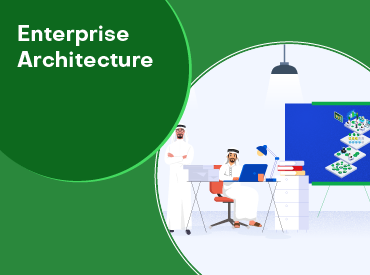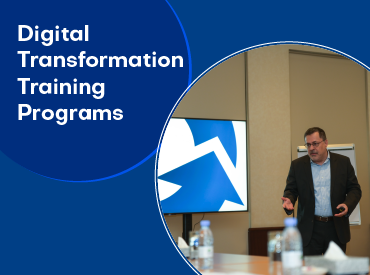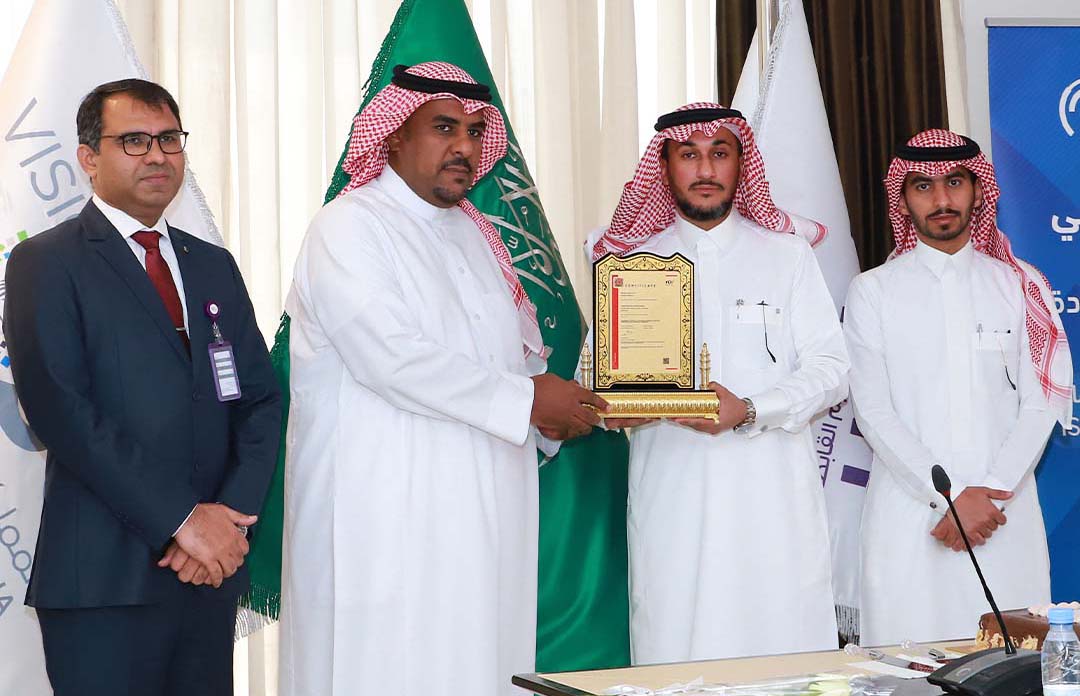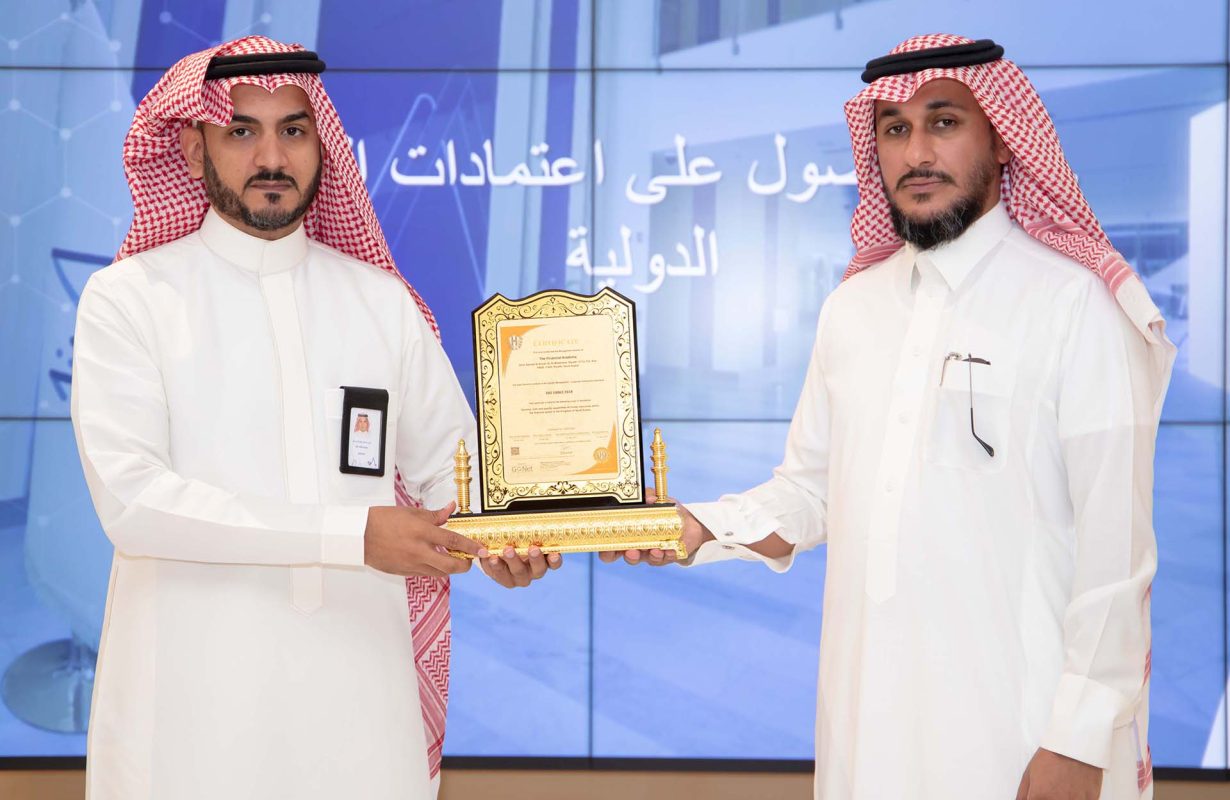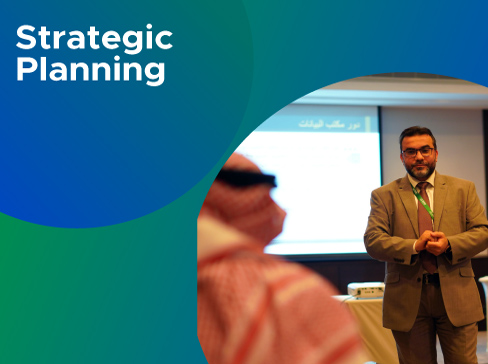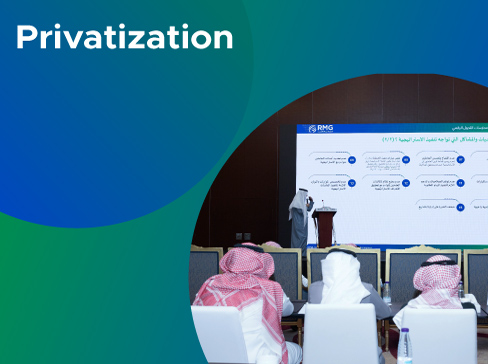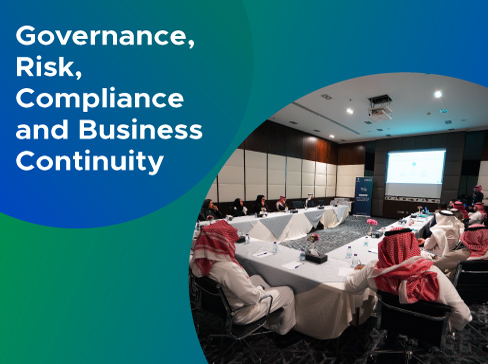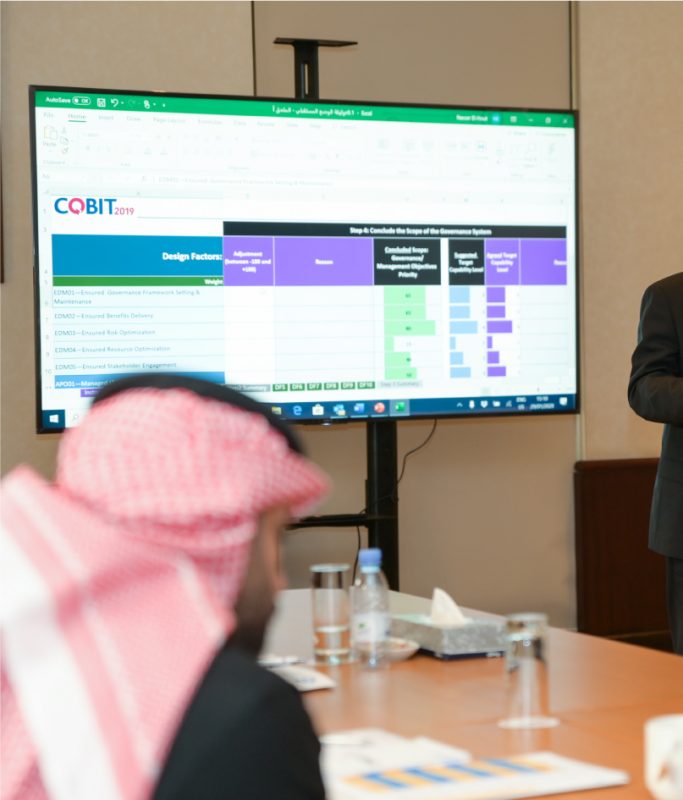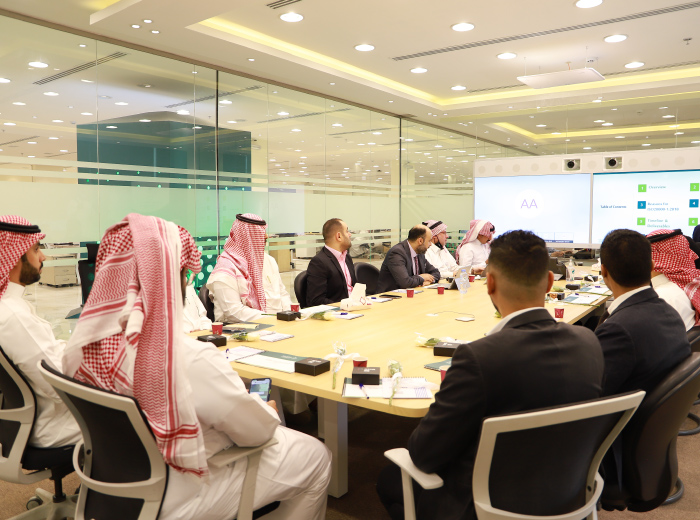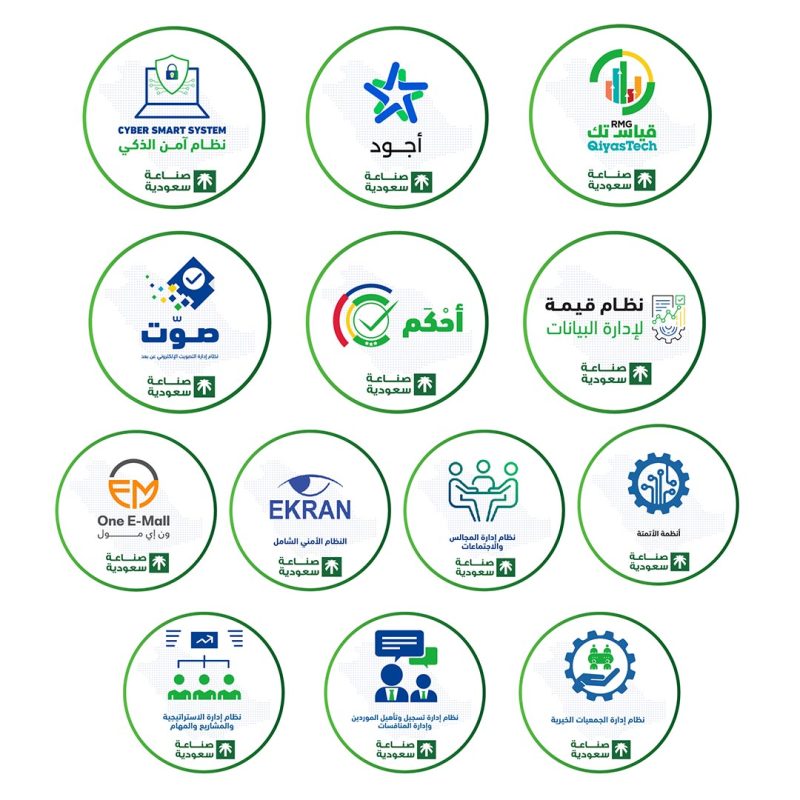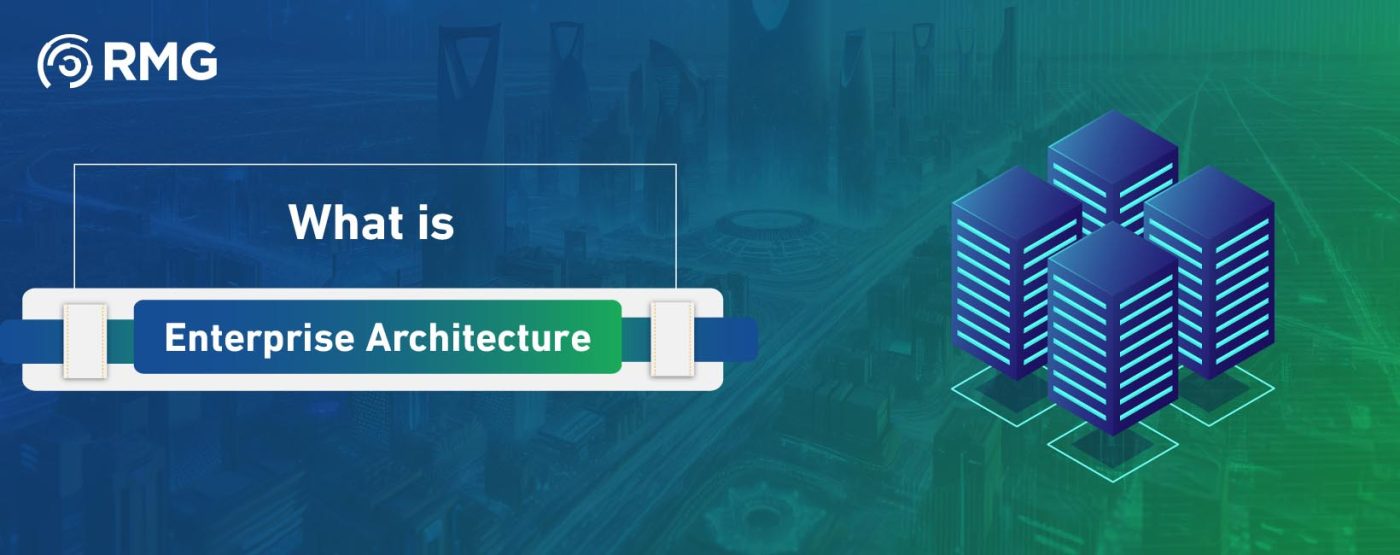
Enterprise architecture serves as the organizational and operational structure for any entity striving for success and sustainable growth. It is not merely a set of procedures and processes; rather, it is an integrated framework that defines how the different parts of the organization interact with each other to achieve common goals. Enterprise architecture is akin to the skeleton of a living organism, giving it shape, strength, and the ability to move and adapt. In this article, we will delve into the concept of enterprise architecture and explore its fundamental principles that contribute to building strong, resilient, and adaptable organizations capable of facing the challenges of the modern era.

What is Enterprise Architecture?
Enterprise architecture is the way an organization structures its resources, operations, and information to achieve its strategic objectives. This structure encompasses multiple aspects, from the organizational structure and distribution of responsibilities to internal processes and procedures, and even the use of technology and information systems. Enterprise architecture helps unify efforts and coordinate work between different departments and administrations, contributing to increased efficiency, productivity, and improved quality of products and services.
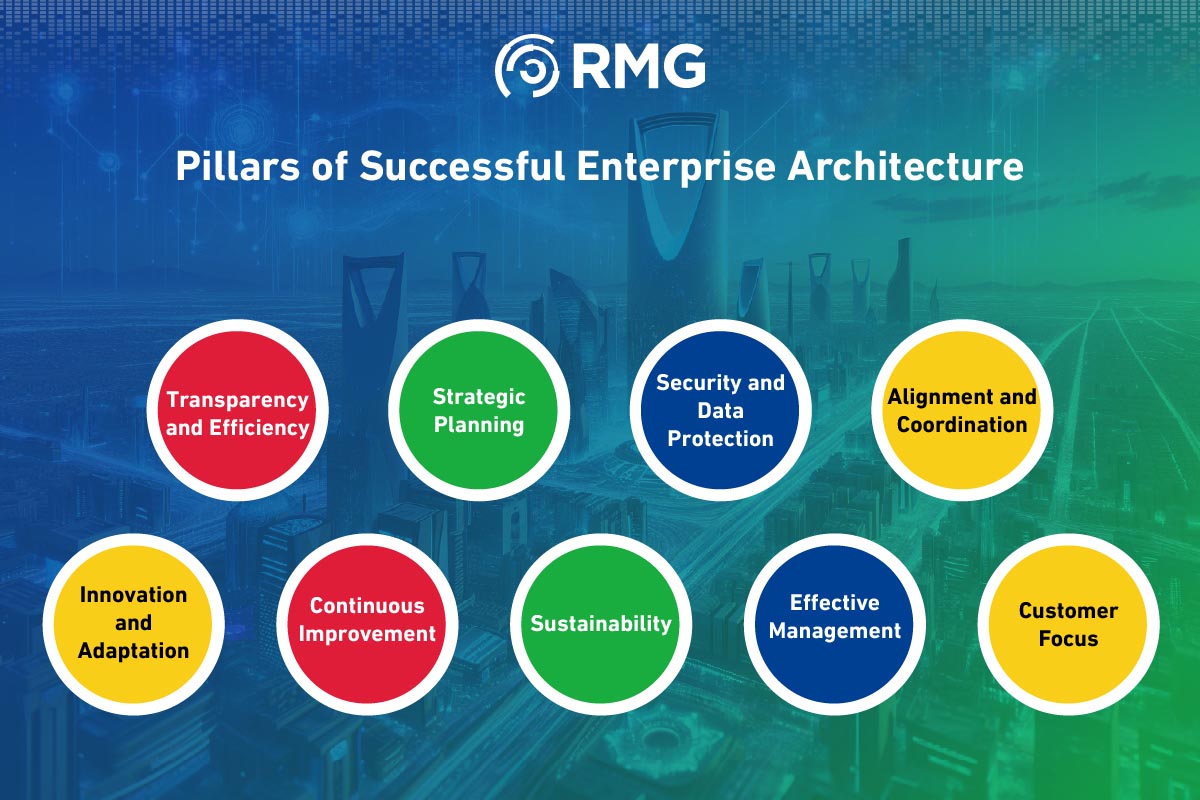
Pillars of Successful Enterprise Architecture
Effective enterprise architecture is based on a set of fundamental principles that guide its design and development. These principles together form a solid foundation that enables the organization to achieve its goals efficiently and effectively. Among the most important of these principles are:
- Transparency and Efficiency: Transparency is the cornerstone of building trust among members of the organization and enhancing efficiency at work. When processes and procedures are clear and understandable to everyone, employees can better understand their roles and responsibilities, which reduces duplication of work and improves information flow. Transparency also contributes to promoting accountability and self-monitoring, leading to improved overall organizational performance.
- Strategic Planning: Effective enterprise architecture cannot be built without sound strategic planning. The strategic plan must consider the organization’s objectives and future vision and define the steps necessary to achieve these goals. This includes analyzing the organization’s internal and external environment, identifying strengths, weaknesses, opportunities, and challenges, and developing detailed action plans to implement the strategy.
- Security and Data Protection: In our digital age, protecting data and information is one of the top priorities of organizations. Security measures must be taken into account when designing the enterprise architecture to protect sensitive data from breaches, leaks, and damage. This includes implementing strict security policies, using encryption and protection technologies, and training employees on best security practices.
- Alignment and Coordination: Alignment and coordination between different departments and administrations within the organization are crucial to ensure smooth and effective workflow. Good coordination helps avoid duplication of work and conflicts of interest and contributes to unifying efforts towards achieving common goals. Alignment and coordination can be achieved through clear organizational structures, precise definition of responsibilities, and the use of integrated information systems.
- Innovation and Adaptation: In light of the rapid changes in the business world, innovation and adaptation are among the most important factors for success and survival. Organizations must be able to adapt to changes in the market, technology, and customer needs and be prepared to adopt new ideas and solutions. This can be achieved by encouraging a culture of innovation within the organization, providing a stimulating work environment for creativity, and investing in research and development.
- Continuous Improvement: Enterprise architecture is not a static entity; rather, it is a continuous process of improvement and development. Organizations must periodically review their operations and procedures, evaluate their effectiveness and efficiency, and make the necessary adjustments to achieve the best results. Various tools and techniques can be used to measure performance and identify areas for improvement, such as Key Performance Indicators (KPIs) and process analysis.
- Sustainability: Sustainability in the context of enterprise architecture refers to the organization’s ability to achieve its long-term goals while considering economic, social, and environmental aspects. This includes using resources efficiently, reducing waste and pollution, and adhering to ethical and social standards.
- Effective Management: Effective management of enterprise architecture is vital to ensure the achievement of its objectives. Effective management includes setting and implementing plans, monitoring performance, and taking necessary corrective actions. Management must have vision, leadership, and the ability to make the right decisions at the right time.
- Customer Focus: The customer is the focus of any successful organization. All processes and procedures should focus on meeting customer needs and providing them with a unique experience. This can be achieved by understanding customer needs and expectations, providing high-quality products and services, and building strong customer relationships.

Enterprise Architecture: The Structure of Success in the Business World
Building a strong and effective enterprise architecture is a strategic investment that contributes to achieving success and sustainable growth for organizations. By adhering to the fundamental principles mentioned, organizations can build organizational and operational structures capable of facing the challenges of the modern era and achieving their goals efficiently and effectively.



